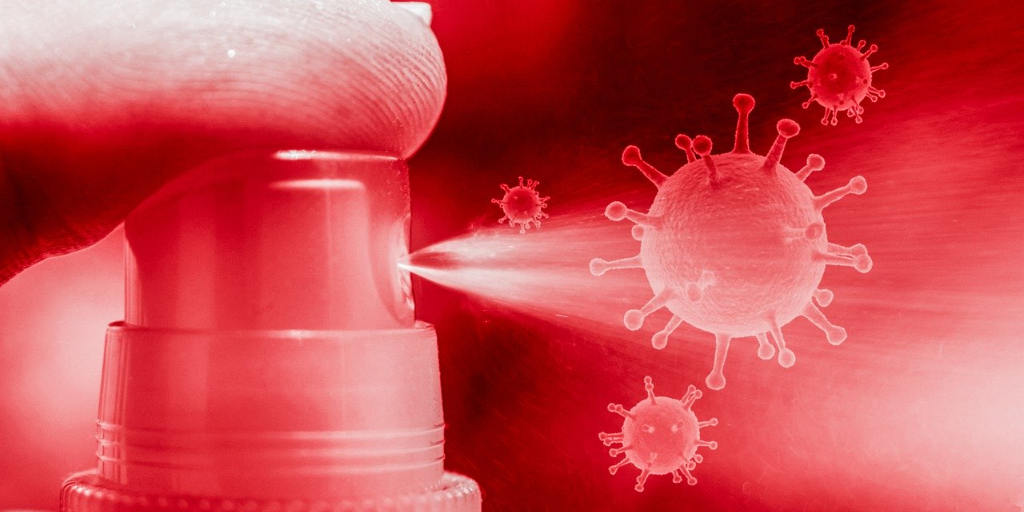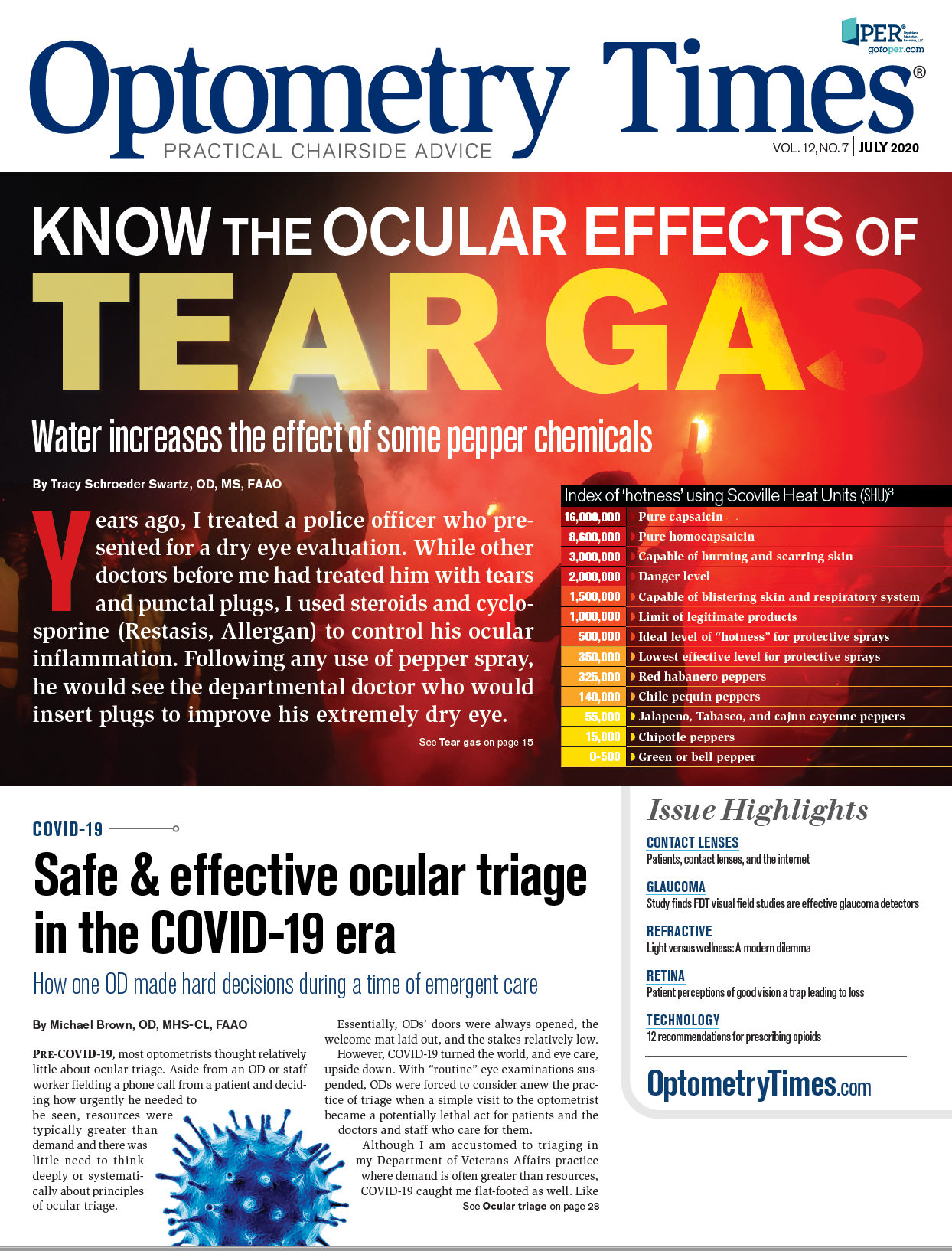Committed to safety: One OD’s COVID-19 response
Managed patient flow, sanitizing, and HIPAA-compliant communication among new protocols

Optometry service, aligning with eyecare practices across the nation, has responded to the COVID-19 pandemic with numerous action steps targeted at protecting the visual welfare of our patients and to “flatten the curve” of infection in our beloved New York City. My optometry staff practices in Manhattan, Queens, Brooklyn, and Harlem. New York City and state, epicenters of infection, demanded swift and demonstrative barriers to infection spread.
Top of mind is that the coronavirus responsible for COVID-19 infection, has been isolated in the tear film and is responsible for viral conjunctivitis.1 Therefore, it is of the utmost importance to protect eyecare patients and providers from exposure.
Outlined are my team’s efforts to truncate infection spread in our centers and city.
What’s working for us
All nonessential examinations and testing in the optometry department have been postponed. Doctors of optometry and seasoned ophthalmic technician staff individually review every patient scheduled for routine and follow-up care. Those appointments for interocular pressure (IOP) checks, retinal optical coherence tomography (OCT), epiretinal membrane progression, cataracts, macular degeneration, dry eye and select diabetic cases are postponed.
Each patient is counseled on ocular safeguards and follow up and receives recommendations on how to maintain eye health under our current pandemic restrictions.
All onsite visits have been designated to problem-based assessments to limit patient time within the centers. Those patients who attend in-person appointments are triaged based on the urgency of the reason for their visit. Video consultations are held whenever possible, via secure platforms, in order to reduce onsite visitations. These virtual appointments help to limit the risk of infection for patients and staff across multiple high-risk environments, including local and mass transit.
Accepted patients, once onsite, are screened with a battery of symptom questions, have their temperatures measured, are face masked, and are sent to the optometry suites where hand and spectacle washing are mandatory prior to sitting in the examination chair. Examination chairs are covered with full-barrier shields (head rests, arm rests, and seats are covered with plastic barrier sleeves). Patients are not permitted a companion in the exam room unless they are of pediatric age, need translation services, or require an aide for comprehension, impaired hearing, or other identified disabilities. Doctors and technicians are masked (surgical or KN95) and gloved.
All eye contact procedures (Goldmann applanation tonometry, gonioscopy, other) and non-contact tonometry (NCT), are not performed unless absolutely necessary for diagnosis or case management. Disposable tonometer tips, Tono-Pen (Reichert) or Icare tonometry is preferred. If used, tonometer tips are rotated and disinfected between use. Tonometer tips are covered after disinfection with a plastic shield.
Breath shields were added to all slit lamps and binocular indirect instruments.
Exam rooms are rotated between exams and thoroughly wiped down with commercial disinfectant wipes (desks, slit lamp and table, keyboards, phoropter, handheld instruments, occluders, and near cards). Barrier shields are changed. Indirect lenses are washed with mild soap and water and dried with a clean, soft, optical-grade cleaning cloth. Microscope oculars are cleaned. We are investigating, with our dental service, the use of electrostatic units to disinfect exam rooms between patients.
Communication
There is a plan to reduce clinician staffing in a way that rotates teams and minimizes exposure risks from public transport. While one team works from home, recharges, and recovers in quarantine, the other works onsite. This has made instant communication between colleagues paramount. To facilitate broad and rapid communication, colleagues were added to a secured messaging platform so that every team member can remain abreast of rapidly changing information, be it patient-centric or service-centric.
To transition to telehealth, physicians enrolled in Health Insurance Portability and Accountability Act (HIPAA)-compliant messaging and video platforms. Patients were encouraged to register on a patient portal for bidirectional communication and patient-uploaded-to-chart imaging. Online, telehealth, learning services prepared by optometry schools, state associations, private practices, and other eyecare outlets were consulted (thank you, optometry!) for best-practice tips for optometric/ophthalmologic telehealth examinations.
To offset the impact of staffing shortages and absences, team members expanded their normal responsibilities to support those areas needing additional support, such as pharmacy, nursing triage, calling COVID-19 isolated or quarantined patients, and monitoring for worsening or unresolved symptoms.
The opportunity for my team to offer care from home has granted respite to doctors and technicians during this stressful time. Our Member’s Health Assistant Program clinicians have been available throughout the crisis for personal mental health check-ins and Group Zoom consultation sessions. This service bonded staff across job functions and helped the organization unite in the common goals of our facilities, city, and state.
I wish you and your family health.
References:
1. Willcox MD, Walsh K, Nichols JJ, Morgan PB, Jones LW. The ocular surface, coronaviruses and COVID-19. Clin Exp Optom. 2020;103(4):418-424. doi:10.1111/cxo.13088

Newsletter
Want more insights like this? Subscribe to Optometry Times and get clinical pearls and practice tips delivered straight to your inbox.